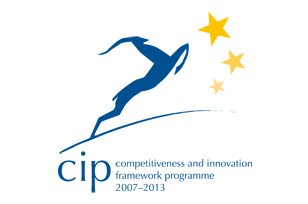 South Africa - Balancing Conservation and Tourism in Kruger National Park
South Africa - Balancing Conservation and Tourism in Kruger National Park
In the heart of South Africa lies Kruger National Park, a vast wilderness teeming with iconic African wildlife and breathtaking landscapes. This chapter delves into South Africa's efforts to balance conservation and tourism in Kruger National Park, showcasing innovative strategies that protect biodiversity while providing unforgettable safari experiences for visitors.
Introduction to Kruger National Park:
Established in 1898, Kruger National Park is one of Africa's oldest and most renowned conservation areas, spanning nearly two million hectares of savanna, bushveld, and woodlands. Home to the "Big Five" – lions, elephants, rhinos, leopards, and buffaloes – as well as hundreds of bird species and other wildlife, Kruger is a biodiversity hotspot and a symbol of South Africa's commitment to wildlife conservation.
Conservation Challenges and Initiatives:
Despite its protected status, Kruger National Park faces numerous conservation challenges, including poaching, habitat loss, and human-wildlife conflict. However, South Africa has implemented a range of initiatives to address these threats, including anti-poaching patrols, community-based conservation programs, and habitat restoration projects aimed at restoring degraded ecosystems.
Sustainable Tourism Practices:
As one of Africa's premier safari destinations, Kruger National Park attracts millions of visitors each year seeking close encounters with the continent's iconic wildlife. Sustainable tourism practices, such as low-impact safari vehicles, guided walking tours, and eco-friendly accommodations, minimize the ecological footprint of tourism activities while providing memorable and educational experiences for visitors.
Community Engagement and Empowerment:
Local communities living in and around Kruger National Park play a crucial role in conservation efforts, with many residents employed as park rangers, guides, and conservationists. Community-based initiatives, such as the Black Mamba Anti-Poaching Unit and the Community Rhino Ambassadors program, empower residents to actively participate in wildlife conservation and natural resource management, creating economic opportunities and fostering a sense of stewardship among community members.
Education and Awareness Programs:
Environmental education programs and interpretive centers within Kruger National Park educate visitors about the importance of wildlife conservation, sustainable living practices, and the role they can play in protecting natural resources. Through guided game drives, bush walks, and educational presentations, tourists gain a deeper understanding of the ecological significance of Kruger's ecosystems and the threats facing its wildlife.
Research and Monitoring:
Scientific research and monitoring programs within Kruger National Park provide valuable insights into wildlife populations, habitat health, and ecosystem dynamics. Researchers study animal behavior, track migratory patterns, and monitor the impacts of climate change on Kruger's biodiversity, using data to inform conservation policies and management decisions.
Challenges and Future Directions:
Despite progress in conservation and sustainable tourism, Kruger National Park still faces challenges such as wildlife trafficking, invasive species, and the effects of climate change. South Africa must continue to invest in conservation efforts, strengthen partnerships with local communities and stakeholders, and promote responsible tourism practices to ensure the long-term viability of Kruger's ecosystems and the protection of its iconic wildlife.
Conclusion:
Kruger National Park stands as a testament to South Africa's commitment to conservation, biodiversity, and sustainable tourism. By balancing the needs of wildlife, local communities, and visitors, South Africa showcases the potential for protected areas to serve as models of environmental stewardship and biodiversity conservation. As Kruger continues to inspire and educate visitors from around the world, it remains a beacon of hope for the future of wildlife and wilderness conservation in Africa and beyond.
























































